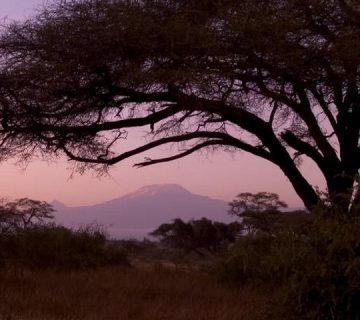Conquer Mount Kilimanjaro: Essential Gear for Extreme Weather
Welcome to the exhilarating world of Mount Kilimanjaro, where the clouds bow to the might of its towering peak and where each step is a dance with nature’s elements. Here at the Kilimanjaro Centre for Trekking and Ecotourism (KCTE), we are not just enthusiasts of adventure; we are custodians of your once-in-a-lifetime journey to the roof of Africa. As you prepare to conquer the tallest free-standing mountain in the world, understanding and equipping yourself with the right trekking gear for extreme weather conditions is not just important—it’s essential.
Why the Right Gear Matters on Mount Kilimanjaro
Trekking Kilimanjaro is no ordinary feat. With altitudes that soar up to 5,895 meters, the weather here swings like a pendulum between extremes. From tropical warmth at the base to below-freezing temperatures at the summit, the mountain tests your endurance and your equipment. Having the right gear is not just about comfort; it’s about safety. It ensures that you can focus on the experience, soaking in the breathtaking vistas and the pure joy of achievement, rather than battling the elements unprepared.
Essential Kilimanjaro Trekking Gear for Extreme Weather
Layer Up: Clothing Essentials
Base Layer:
Start with a moisture-wicking base layer that keeps you dry and warm. A good thermal base layer will draw sweat away from your body, maintaining your core temperature and reducing the risk of hypothermia.
Insulation Layer:
Your mid-layer should insulate and retain body heat. A fleece or a lightweight down jacket that can be compressed and packed easily will serve you well as you ascend through varying temperatures.
Outer Layer:
The shell layer should be both waterproof and windproof. Look for breathable fabrics to prevent moisture from getting trapped, which could lead to a chill. A hooded jacket is preferable, as it offers additional protection against sudden downpours or wind.
Protect Your Extremities
Gloves:
A good pair of waterproof, insulated gloves is crucial, especially towards the summit where frostbite can be a concern. Consider layering a thin pair of liner gloves under a heavier pair for better insulation.
Hats and Balaclavas:
Protect your head and face from the sun and the cold. A balaclava can cover your neck and much of your face, providing crucial warmth, especially on the summit night.
Socks:
Wool or synthetic fibers that offer moisture-wicking properties and insulation even when wet are your best bet. Layering a lighter sock under a heavier one can provide additional comfort and protection against the cold.
Footwear: Your Foundation
Investing in the right kind of boots is non-negotiable. Choose waterproof, insulated, and high-ankle trekking boots that are broken in and comfortable. Good grip is essential for slippery or icy paths, and ample ankle support can prevent injuries.
Eye Protection and More
Sunglasses:
High UV protection and wraparound glasses will protect your eyes from intense sun glare and wind. At higher altitudes, the UV exposure increases significantly, making proper eye protection critical.
Sunscreen and Lip Balm:
The sun at high altitudes is fierce. A broad-spectrum sunscreen and a good lip balm with high SPF are necessary to protect your skin and lips from sunburn.
Packing Smart: Additional Gear Tips
Backpack:
A sturdy, comfortable backpack with a rain cover is essential. Make sure it has enough capacity for your gear, but avoid overpacking. Test your pack before the hike to ensure it sits comfortably on your shoulders.
Sleeping Bag:
Nights on Kilimanjaro can be frigid. A four-season sleeping bag is recommended. Consider a sleeping bag liner for additional warmth.
Hydration Systems:
Staying hydrated is key. Insulated water bottles or a hydration bladder with a thermal cover can prevent your water from freezing at higher altitudes.
Trekking Poles:
These can be a knee-saver during descents and help with balance on uneven terrains.
Headlamps:
A reliable headlamp with extra batteries is a must-have, especially for night trekking during your summit attempt.
Frequently Asked Questions About Kilimanjaro Trekking Gear
Q: Can I rent trekking gear in Tanzania?
A: Yes, at KCTE, we offer gear rental options. However, for personal items like boots and base layers, we recommend bringing your own for best fit and comfort.
Q: What is the best time of year to climb Kilimanjaro?
A: The best times are during the dry seasons, from June to October and from December to March. However, Kilimanjaro is a year-round destination.
Q: How important is it to have a guide for Kilimanjaro?
A: It’s not just important; it’s mandatory. All trekkers are required to have a guide, which ensures safety and increases the likelihood of a successful summit.
Q: How do I prepare physically for the trek?
A: Engage in regular cardiovascular exercises like hiking, running, and cycling. Strength training, especially for your legs and core, is also beneficial.
Ready for Your Kilimanjaro Adventure?
Embarking on a trek to Mount Kilimanjaro is a monumental experience that promises not just panoramic views but a profound personal transformation. Equipped with the right gear, you can face the mountain’s extremes with confidence. Remember, every piece of gear is a shield against the elements, a tool that enables you to embrace the journey fully.
At the Kilimanjaro Centre for Trekking and Ecotourism (KCTE), we are committed to making your trek safe, enjoyable, and unforgettable. Book your climbing adventure with us and step into the heart of Kilimanjaro, where every stone tells a story, and every breeze sings the songs of the skies. Are you ready to conquer the summit and touch the clouds? Join us at KCTE, where your dream climb begins.




